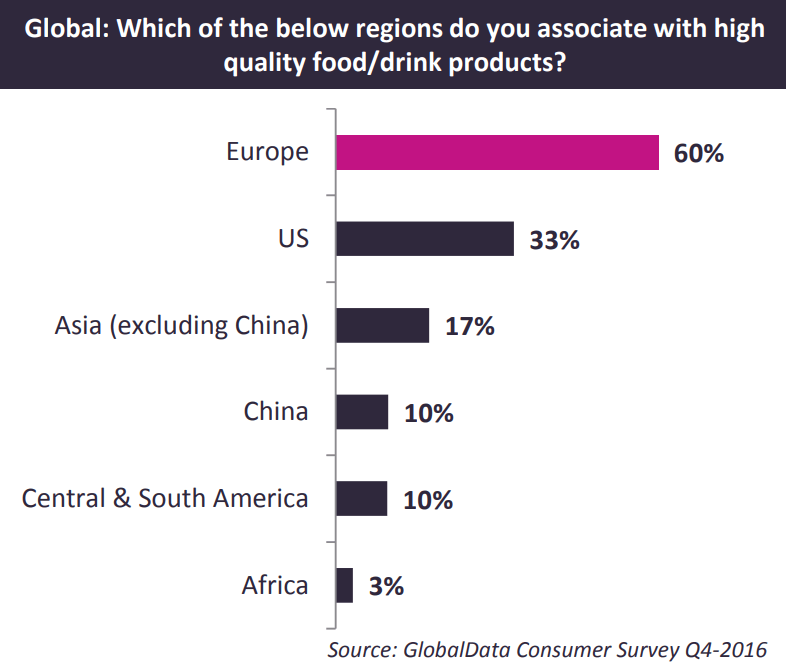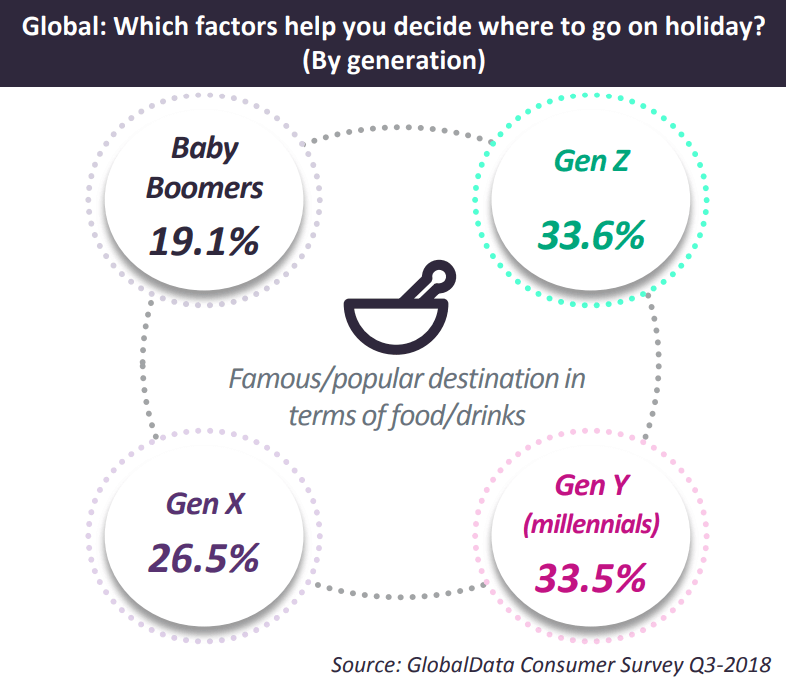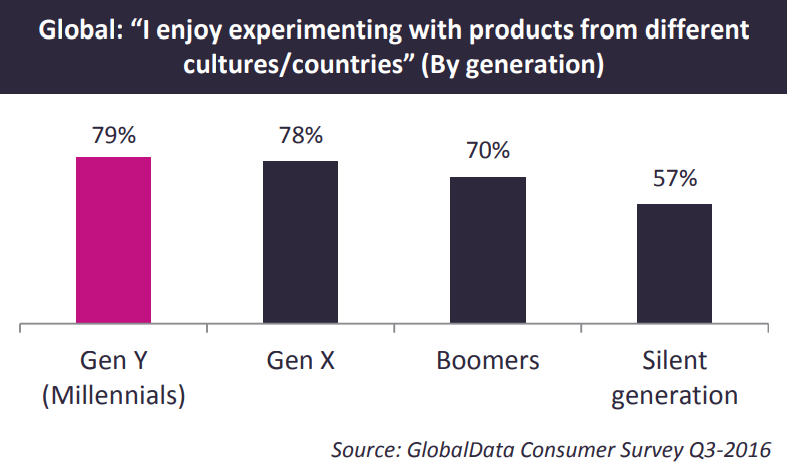60+ Food Tourism Statistics (2023)

Culinary tourists sought after excellent food that is reflective of the culture of their destinations and a whopping 95% of travelers around the world can be classed as a food traveler. Where does this increased interest in local food come from and what classifies someone as a food tourist? Our food tourism statistics explore the top food tourism statistics, the culinary tourism market, food traveler’s demographic, and the most current food tourism trends.
Read on for more top statistics picked by our editor…
TOP Food Tourism Statistics
- In 2022, the food tourism market was valued at $1,116.7 billion and this is expected to rise to $1,796.5 billion by 2027, a 16.8% growth..
- 95% of travelers around the world can now be classed as food travelers.
- Before visiting their destination, 80% of travelers will research food and drink before they go.
- Research shows that 70% of people pick a destination based on the food and drink there.
- 95% of U.S. citizens are interested in having ‘some kind of unique food experience’.
- 45% of travelers who participated in a recent study had at least five different culinary activities during their trip away.
- 35% of food tourism shares are from Europe this is then followed by North America, APAC, South America, and MEA.
- 77% of millennials travel to have memorable eating and drinking experiences.
- 63% of millennials like to eat at places that show social responsibility.
- 59% of respondents surveyed stated that they believe food and drink are more important now than they were 5 years ago.
What do you want to know?
Local food has always been a factor tourists will contemplate when choosing their next destination, however, 59% of people think food and drink are more important now than it was 5 years ago. Why is this the case? Social media has impacted the way we travel, aesthetic-looking foods from different countries can massively influence people’s choice of destination. Millennials are shaping culinary tourism as 77% of this demographic travel to have memorable eating and drinking experiences.
Chapter One
Top Food Tourism Statistics
Food tourism refers to people traveling to enjoy the food of other countries and to further understand the location and culture. More and more people are traveling for the sole purpose of memorable eating and drinking, and this criterion is just as important as the climate for some.
Key Statistics:
- 95% of U.S. citizens are interested in having ‘some kind of unique food experience’.
- 45% of travelers who participated in a recent study had at least five different culinary activities during their trip away.
- In the last two years, 93% of tourists have at least one unique food or drink activity.
- Food tourism statistics show that 81% of people think that food helps them understand a culture.
- Gastro tourism is on the rise as 83% of people like to learn about local food and drink whilst traveling.
- 47% of travelers shop at a local grocery store.
- 59% of respondents surveyed stated that they believe food and drink are more important now than they were 5 years ago.
- 70% of people surveyed stated that they bring local food or drink back home as a gift.
- Culinary tourism is a big market as 70% of respondents of a recent survey said they spend more on food and drink abroad.
- 83% of people think that food helps shape their trip and leaves a lasting impression.
- Culinary tourism statistics show that 62% of people start purchasing food and drink they tried abroad at home.
- According to a recent study, 73% of people stated that a variety of cuisine makes somewhere a good food destination. This was followed by regional food (36%), the reputation of the food service (18%), and tradition (95%).
- The food in European countries such as Spain, Greece, Italy, and France is world-renowned and classed as the best globally.

Chapter Two
Culinary Tourism Market
Culinary tourism contributes significantly to the economy as it currently has a market value of $1,116.7 billion. This is expected to continue growing at a CAGR rate of 16.8%, demonstrating people’s continued interest in food and drink when they travel abroad.
Key Statistics:
- In 2018, the food tourism market was worth $82 billion.
- 8.11% was the year on the year growth rate for 2019.
- 35% of food tourism shares are from Europe this is then followed by North America, APAC, South America, and MEA.
- According to the food tourism industry, Europe is the largest market share for food and drink. This is due to the increase in food tourists and well as cruise experiences.
- The total traveler spending in 2019 was $1.1 trillion and $278.9 billion of this was due to food services.
- 16% of an American’s budget for a trip abroad is spent on food and drink and 27% for domestic trips.
- Food tourism industry trends show that 37% of travelers are willing to splurge on food and drink.
- 88.2% of respondents in a recent survey stated that culinary experiences define the brand and image of their destination however only 67.6% believe that their country has its gastronomic brand.
- Culinary tourism ‘products’ included food events (79%), gastronomic routes & cooking classes (62%), and visits to markets and local producers (53%).
- Travelers spend 33% of their money on food.
- In developing countries, 15% is spent on food whereas it can be as high as 35% in other locations.
- In 2013, £30.04 million was spent on Scotland Whisky tourism and 86% of those visiting distilleries were from outside of Scotland.
Chapter Three
Food Traveler Demographics
A culinary tourist plans their destination with local cuisine in mind as it plays an important role in their choice of location. These tourists want to enjoy the food and drink to fully immerse themselves in the culture, almost like they are living like a local. When looking at the profiles of culinary tourists’ millennials are the core demographic.
Key Statistics:
- A recent study has shown that millennials and generation Z find that food influences their choice of destination more than generation X and baby boomers.
- 77% of millennials travel to have memorable eating and drinking experiences.
- The age range for culinary tourists tends to be lower as generation z is very motivated to explore local food and drink despite their little travel experience.
- Millennials are the epitome of a culinary traveler and are driving the force, research also shows that 78% of generation x and 70% of baby boomers are also very likely to enjoy local food.
- 61% of culinary travelers stated that their biggest influence when picking a new destination is the recommendation from family and friends.
- 53% of food travelers trust online review sites.
- 41% of food travelers are influenced by family and friend’s social media posts.
Food travelers are:
- 17% more likely to consider social media before picking their destination
- 12% more likely to contemplate recommendations made by family and friends.
- 12% more likely to consider blogs, articled, and the new before booking
A study by Tikkanen found that the main motivations for food tourists are:
- The food itself is an attraction
- Experiencing food and drink is sought after
- Foodstuffs are consumed and purchased by culinary tourists
- The local food is considered a cultural phenomenon
- Tourism and food links are sought after and valued.


- Gourmet tourists specifically like to eat food and drink or quality and exclusiveness.
- Gastronomic enthusiasts love food, enjoy up and coming restaurants, and often like to cook.
- Culturally engaged tourists like to connect with the culture through food to further understand the location.
- Those who are culinary adventurous like to engage with the culture but want to try non-touristy locations.
- Social food travelers use food and drink abroad to socialize.
- Authentic food tourists like to try traditional food that is full of flavor.
- A lot of people like to buy budget and have the local street food.
- Eclectic culinary tourists like to try a little bit of everything.
- Some people like to try food that blends different cuisines.
- A lot of travelers like to eat locally with all ingredients sourced from a local producer.
Chapter Four
Food Tourism Trends 2022
More and more people are traveling to try the local cuisine as gastronomic tourists are looking for authentic experiences to help connect with the culture. In 2022, organically grown local produce is a significant food tourism trend.
Key Statistics:
- Food travel trends show that organically grown and authentic dishes are becoming more important for travelers.
- 63% of millennials like to eat at places that show social responsibility.
- Learning about food and culture is important to travelers so tour operators who combine food with culture have an edge over competitors.
- Gastronomic events are becoming increasingly popular as it gives tourists a reason to visit a destination.
- Culinary tourists are very interested in having homemade meals with the locals.
- The Philippines, Australia, and South Africa provide incredible dishes making them ideal destinations for food tourists as they are often after authentic experiences.
- 2 million locals and tourists went to the Philippines for the Pahiya Festival in 2015.
- Beautiful looking food that can be posted on Instagram is a very popular culinary tourism trend as it influences others to go to this destination.
- Variety is important for food tourists and is one of the main criteria for their food to be considered a memorable experience.
- Whiskey torus, gin distilleries, and wineries are attracting more and more tourists.
Conclusion
Food tourism is becoming increasingly popular especially amongst the younger generation as this demographic is shaping how we travel due to the influence of social media. The food tourism market is not slowing down as it is expected to rise to a mammoth $1,796.5 billion by 2027, demonstrating the significance of culinary tourism on the economy. It is also interesting to discover that 70% of people spend more money on food abroad than they do at home revealing the importance of a unique food experience when traveling.






